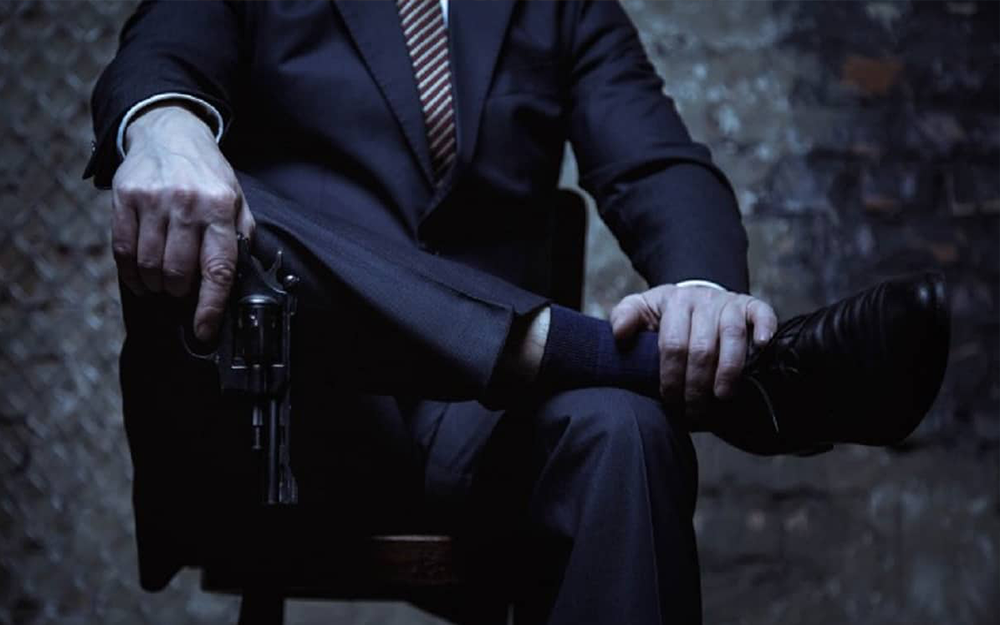Among the categories of crimes presented by criminologists ‘organized crime’ holds a significant state. It can be seen that in any society people get together and work with the expectation of getting a maximum return for minimum expenditure, effort, and energy. They work with other people under the division of labor as an efficient way of performing activities. In the same way, in the criminal field, get organized themselves to find more money with less effort and fewer risks. As legitimate citizens, criminals are motivated to earn money without difficulties (Vold and Bernard, 1986:322-23). Organized crime has been defined in different ways by scholars. Cressey (1969,1972) defines organized crime as having the characteristics of a formal organization which includes division of labor, coordination of activities through rules and codes, and an allocation of certain tasks to various elements to achieve their expected goals. These organizations profit from their crime while trying to protect from both internal and external threats. Although some authors have defined what constitutes organized crime from different perspectives there is a common definition of organized crime based on the consensus of authors over the last three decades as “organized crime is a continuing criminal enterprise that rationally works to profit from illicit activities; its continuing existence is maintained through the use of force, threats, monopoly control, corruption and malpractices of public officials and the rulers. This definition is sufficient to cover the misconduct of government officials, obstruction of justice, bribery, and commercial transactions included in organized crimes. Further, crimes committed by the corporations during the business and transactions, and crimes committed by the politicians and the government agencies can also be placed within the scope of the above definition of organized crime.
Over the years different ethnic groups have been involved in organized crime in America. The Irish were followed by Eastern European Jews, the Jews by Italian and Sicilian immigrants, Puerto Rican immigrants, blacks, and Chinese immigrants and of them, Italian-American immigrants made a lasting impression on the scene of organized crime in America (Adler, et.al, 1995:304-305). Organized criminal groups such as Rusian ‘Mafia’ and Japan ‘Yakusa’ and American ‘ Outlaw Motorcycle Gangs’ have shown unique characteristics that are limited to them. In many countries organized crimes are committed by groups for their purposes (Walsh and Hemmans, 2011:518-520).
When the characteristics of organized crime are considered criminologists have a general agreement over the following factors.
- The crimes are organized to make money with the available opportunities. As the perpetrators are engaged in mostly illegal activities for money-making such acts are called organized crime.
- The main objective of organized crime is to provide illegal goods and services to those who need them or can be induced to want them.
- Nexus between the government officials and rulers. Organized crime makers use political corruption as a means of their survival.
- The generational persistence of the organization even with the change of its members in the event of their retirement or death.
- Established rules of conduct for the membership. Sanctions for violation of rules help to ensure the persistence of conformity and predictability of the organization (Barlow, 1978:272-273).
Organized Crime in Sri Lanka
There had been minor violations of foreign exchange in Sri Lanka before 1980. After Sri Lanka introduced an open economy into the country in 1978, a passage was created for the emergence of underworld criminal gangs. The socio-economic and political changes introduced by the government that came to power in 1977 were conducive for the violation of laws and setting up of illegal enterprises. Consequently, in the early 1980s, there had been several underworld criminal gangs. The first such criminal gang was formed by Lenin Amarasinghe in 1985 in Rajagiriya. He earned money by demanding ransom from business enterprises in the area. Those who refused to pay ransom for him were inflicted with heavy torture while taking them to his custody. Consequently. Many businessmen had paid his ransom to prevent them from being tortured. In addition to taking ransom, the underworld gang of Lenin Amarasinghe was involved in brewing and selling illegal alcohol in ‘Sakkiliwatta” area in Rajagiriya and also in raping and kidnaping people. The second underworld gang was formed by a person named Aramba Gedara Upali allis ‘Sothi Upali’ as Lening Amarasinghe demanded ransom from him. As a result of conflicts between these two underworld gangs, Lening Amarasinghe, and some of his family members were killed by the Gang of Sothi Upali in 1986. After some members of these two gangs had quit their organizations they formed separate underworld gangs. Later the members who deserted the forces namely Army, Navy, and Air force, and the police joined underworld gangs, and they were welcomed by the gang members as the deserters brought along with their weapons and their ability to shoot at the targets. By the year 2004, there had been 73183 persons who deserted the forces and 35000 illegal weapons in the use of the country. Some of the deserters of the forces had joined the organized crime gangs as they were not able to find suitable jobs. They were also continuously searched by the authorities to be arrested for deserting the forces and the police. Within this scenario, a large number of underworld criminal gangs were operating in Colombo and Suburban areas such as Maligawatta, Dematagoda, Maradana, North Colombo, and they were mostly involved in drug trafficking as it is a profitable business. Those gangs operated in Colombo south and Nugegoda areas depended on demanding ransoms, maintaining brothels, and providing security to their clients. those who occupied houses by force without paying due renters were chased away from their places by the underworld gangs after obtaining ransom from their house owners.
Many underworld crime gangs receive the patronage of politicians who are engaged in corruption. They provide these corrupted politicians security, financial assistance, goods, and services on special occasions. Conversely, politicians also provide protection and assistance to maintain underworld business. As a result, officials who take action against organized crime face various difficulties.
In Sri Lanka, in addition to the underworld criminal gangs, other organized crime groups are involved in illegal business enterprises to make large profits under the pretext that they are involved in legitimate business enterprises. Among their illegal business enterprises, foreign exchange frauds, human trafficking, import of goods under invoices, bringing prostitutes from foreign countries are significant. Frauds in foreign exchange take place in Sri Lanka as a major organized crime.
In Sri Lanka, lower-level members of these underworld gangs represent lower-income earners. The causes for them to join Organized gangs were economic difficulties, the association with criminals, growing in broken families unhealthy environments, low education, and unemployment, etc. By joining the organized crime groups they expect to earn quick money to be rich and obtain their deprived privilege in the society. They believe that they could get acceptance in society with adequate wealth. In Sri Lanka, except for the groups involved in foreign exchange frauds the others are underworld criminal gangs motivated solely to earn money by engaging in illegal activities such as drug trafficking, demanding ransom taking, robbery, loan sharking, acquiring property illegally, and hired murder. Often these underworld gangs consist of 3 to 20 members.
One basic fact derived from this discussion is that the legal and the social codes in the country do not permit some commodities and services to circulate in society in this context the organized crime gangs emerge to make money out of them. As there is a competition among organized crimes gangs, they organize to protect themselves and compete.
References
Adler, F., Mueller, G.O.W., Laufer, W.S. (1995) Criminology. New York:
McGraw-Hill, Inc.
Barlow, H. D. (1978) Introduction to Criminology. Toronto: Little Brown and Company.
Cressey, D.R. (1969) Theft of the Nation: The Structure and Operation of Organized Crime in America. New York: Harper & Row.
Cressey, D.R. (1972) Criminal Organization. New York: Harper & Row.
Vold, G.B., Bernard, T.J. (1986) Theoretical Criminology. 3rd ed. New York: Oxford University Press Inc.
Wales, A., Hemmens, C. (2011) Introduction to Criminology. USA: Sage
Publication Inc.
Prof. M.W. Jayasundara
Department of Criminology
and Criminal Justice
University of Sri Jayewardenepura






